For years VW said Australia was just too hot for its most advanced vehicles, which is why stop/start technology - that kills the engine at idle and fires it up again when you’re ready to go - has not been available in VWs here.
Now VW has confirmed it will begin the fuel-efficient BlueMotion push in Australia next year with stop/start as the core technology.
It will start with a BlueMotion Golf that comes with a full suite of fuel saving measures and then introduce stop/start technology on other cars including the Touareg and Passat in the following months using the BlueMotion tag.

Value
There won’t be any word on BlueMotion pricing until a lot closer to the launch. There will be a premium for BlueMotion Golf over a standard model, which costs just under $30,000, but that is expected given its remarkable economy. It might cost a bit more, but it won’t be anywhere near as expensive as a Toyota Prius which starts at $39,990.
Technology
The BlueMotion Golf has a suite of features that allows it to record an emissions number of 99g/km CO2 and a fuel economy figure of just 3.8 litres per 100km. Yes, 3.8, which is less than a Prius.
Given its fuel tank is 55 litres, the BlueMotion model could go an incredible 1500km between refills.
The special Golf does use diesel fuel though, unlike the Prius. Petrol burns cleaner than diesel, which explains why the Prius is rated as emitting 10g/km less CO2.
The VW runs a 1.6-litre common rail four-cylinder turbo diesel that produces 77kW at 4400revs and 250Nm of torque from 1500revs to 2500revs, the same figures as the regular engine.
This powerplant has slightly different software which changes some characteristics.
While most new small cars, especially premium models, have six-speed manuals, the BlueMotion makes do with a five-speed manual. There is no automatic option.
The stop/start system means that when you pull up to the lights and release the clutch, the system kills the engine. It fires up again when it senses the pressure on the clutch pedal.
The green Golf also captures some energy when braking which it sends to the battery to avoid using too much fuel to charge the battery, which works hard to due to the frequent starts.
More fuel is saved with the use of special low rolling resistance tyres, the wheels are also tuned for aerodynamics and the suspension is tweaked.
Safety
Like all Golfs, the BlueMotion model comes loaded with safety gear. It has seven airbags, including front, side and curtain airbags as well as a driver knee airbag. There are also seat-belt pre-tensioners, belt force limiters, anti-whiplash headrests for the front seats and three rear headrests.
Styling
Can you pick this as an eco car from the pictures? Either could I. Unlike a car like the Prius, or the upcoming Insight, the Golf BlueMotion is not clearly identifiable as an eco-friendly vehicle. The only hint is a couple of BlueMotion badges. Other than that it looks just like a regular Golf. That’s not a bad thing, the Golf is a attractive vehicle and the interior has quality look, it’s just that it doesn’t trumpet to the world that you paid extra to do your bit for the planet.
Driving
The BlueMotion Golf doesn’t feel much different than a regular 1.6-litre diesel Golf.
It doesn’t behave like a sportscar and it can be a bit gutless at times, like when you change it to second gear and wait for something to happen, but it adequate for an eco car. It’s unlikely the owners will be quoting the 11.3 seconds 0-100km/h sprint time
We test the special Golf through from Hamburg to Berlin and on to Wolfsburg. Some of the work is done in those cities, but most of the distance is covered at speeds that would lead to a court appearance in Australia, but are perfectly legal on German autobahns. Despite the high speeds, the BlueMotion Golf never uses more than 6.5 litres per 100km and sips considerably less around town.
Fuel consumption at higher speeds is better than it could be thanks to taller gearing for the higher gears, which means it pulls less revs at highway speeds.
The stop/start system is fine once you get used to it. It is remarkably quick to restart the engine and must sense the instant the clutch starts to be depressed. This is important because you don’t want to be sitting at the lights waiting for it to start while irate road users stuck behind vent their anger.
The eco Golf handles just as well as a regular model (which is good) and is just as practical. The bootspace is not reduced by a battery pack as is the case with hybrids and it doesn’t weigh anymore. There is a reasonable amount of space in the back seats and there is ample headroom.
Verdict
We will have to test the BlueMotion Golf on Australian roads and in our climate, but it seems like a very sensible way to reduce your consumption. It isn’t all that exciting to drive, but the performance is acceptable and it is very practical.
Volkswagen Golf 2011: 77 Tdi Bluemotion
| Engine Type | Diesel Turbo 4, 1.6L |
|---|---|
| Fuel Type | Diesel |
| Fuel Efficiency | 3.8L/100km (combined) |
| Seating | 5 |
| Price From | $6,160 - $8,690 |
| Safety Rating |
|
Pricing Guides

















.jpg)


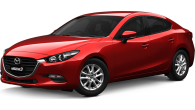


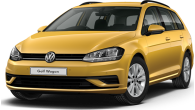













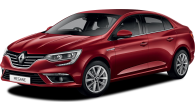
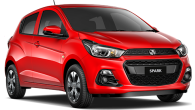
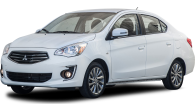






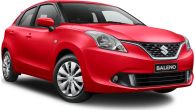





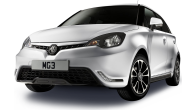

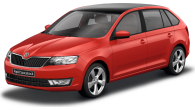


.jpg)
